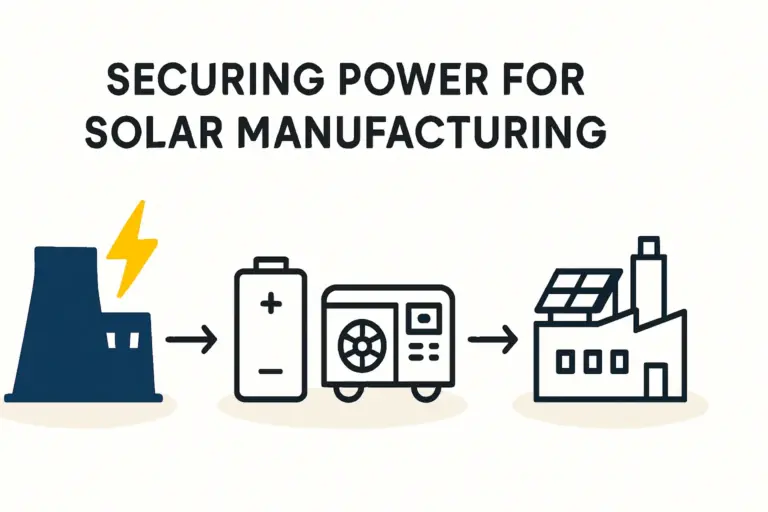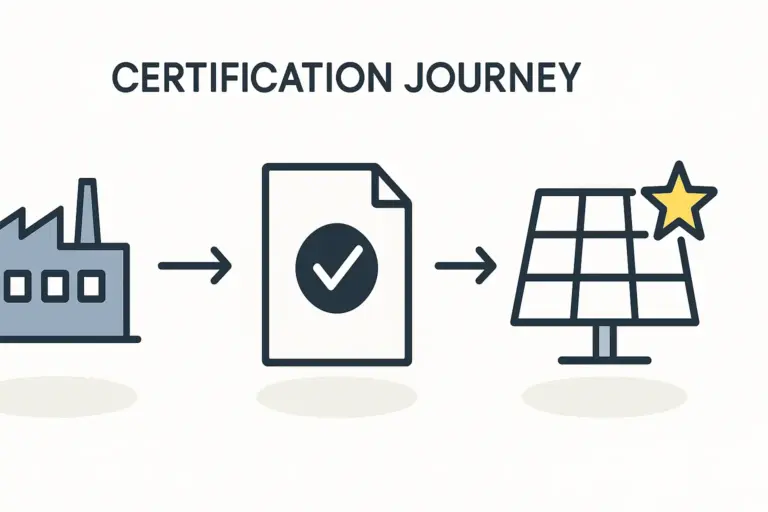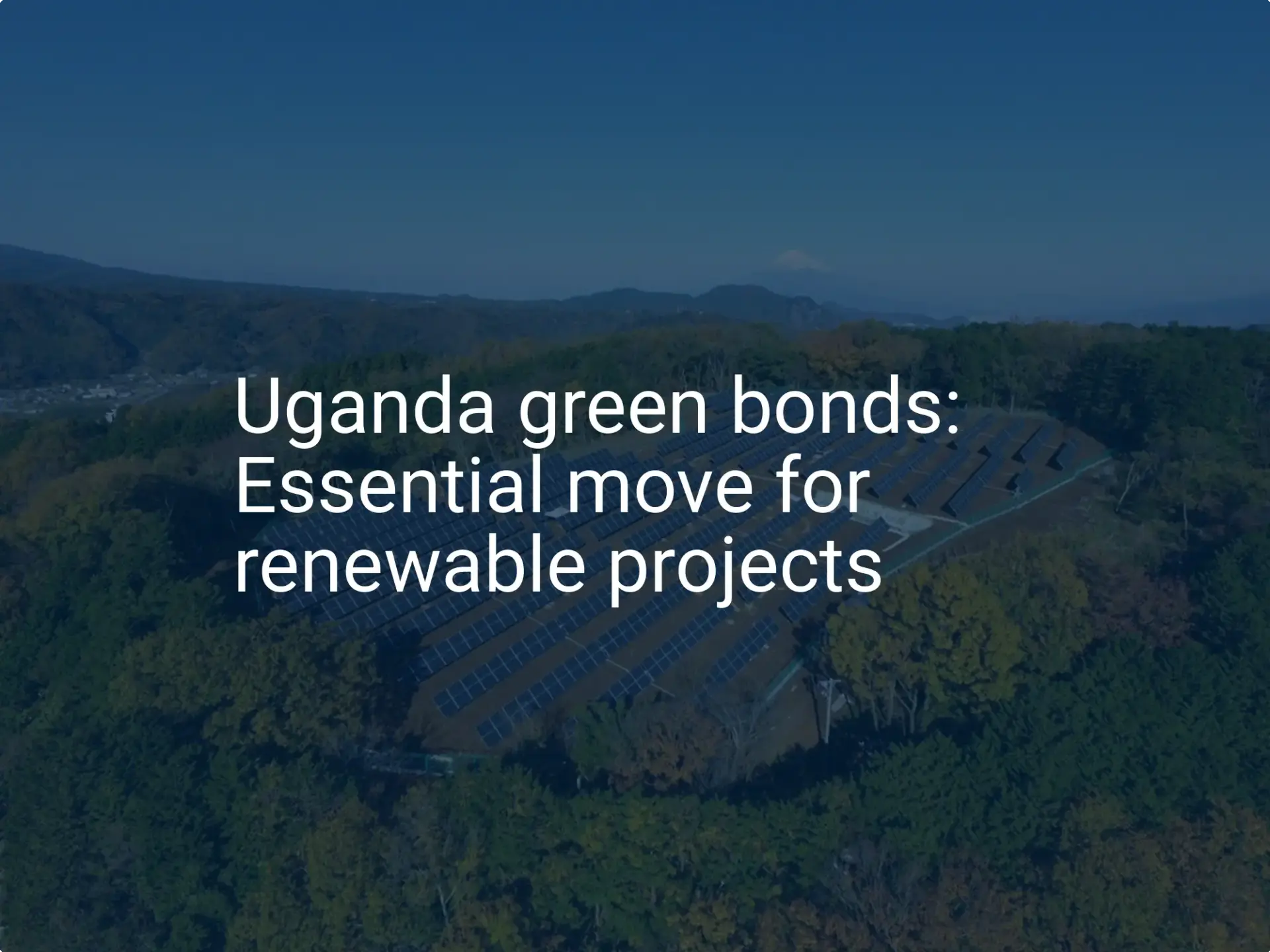An entrepreneur secures the investment for a new solar module factory in Kampala. The business plan is sound, the technology selected, and local demand high. Yet a critical question soon emerges: how does one reliably transport delicate solar cells, large panes of glass, and rolls of polymer film from a manufacturer in Asia or Europe to a facility in a landlocked East African nation?
This logistical challenge is a pivotal, yet often underestimated, component of establishing a successful manufacturing operation in the region. For Uganda, the journey of raw materials from a global seaport to the factory floor is a multi-stage process that requires careful planning, strategic partnerships, and a clear understanding of the local transit landscape.
This guide outlines the key logistical considerations, from port selection to inland freight and customs clearance, for entrepreneurs planning to import solar manufacturing inputs into Uganda.
The Geographical Reality: From Seaport to Factory Floor
Uganda’s landlocked position means it relies entirely on the seaports of its coastal neighbors. The two primary gateways for its international trade are the Port of Mombasa in Kenya and the Port of Dar es Salaam in Tanzania.
For cargo destined for Kampala and central Uganda, the Port of Mombasa is generally the more established and efficient option. It serves as the starting point for the Northern Corridor, a vital network of roads, railways, and pipelines that facilitates transit trade for Uganda, Rwanda, Burundi, and the Democratic Republic of Congo.
Understanding this route is fundamental for building a resilient supply chain. The distance from Mombasa to Kampala is approximately 1,150 kilometers, a journey that presents several choices and potential bottlenecks.

Choosing Your Inland Transit Route: Road vs. Rail
Once a container is offloaded in Mombasa, the next decision is how to transport it inland to your factory. Two primary modes of transport are available, each with its own advantages and disadvantages.
The Dominance of Road Freight
Currently, road transport accounts for around 95% of all freight moved along the Northern Corridor. Trucks are the workhorses of East African logistics, offering flexibility and door-to-door service directly to a factory’s location. The main road artery runs from Mombasa through Nairobi and Eldoret before crossing into Uganda at one of two major border posts: Malaba or Busia.
However, this reliance on road freight comes with inherent challenges:
-
Transit Time: The journey can take anywhere from 4 to 10 days, depending on road conditions, traffic congestion, and border crossing efficiency.
-
Infrastructure: While major highways have improved, road conditions can be variable, posing risks to fragile cargo like solar glass.
-
Weighbridges and Checkpoints: Multiple weighbridges and checkpoints along the route can introduce delays.
The Emerging Rail Alternative
The development of the Standard Gauge Railway (SGR) in Kenya offers a modern alternative. The SGR line runs from Mombasa to an inland container depot in Naivasha. From there, goods are transferred to the older Meter Gauge Railway (MGR) for the final leg to the Malaba border and onward into Uganda.
Advantages: Rail is often faster, more secure, and less susceptible to traffic-related delays than road transport, particularly on the Mombasa-Naivasha section.
Disadvantages: The process requires transshipment—moving the container from the SGR train to an MGR train—which adds complexity and cost, though the process is likely to become more streamlined over time.
For a new solar manufacturing venture, the choice between road and rail depends on the urgency, cost sensitivity, and fragility of the specific shipment.

Navigating Customs and Clearance Processes
Historically, clearing goods at multiple borders caused significant delays and administrative burdens. Fortunately, the East African Community has implemented systems to streamline this process, creating a more predictable environment for importers.
The Single Customs Territory (SCT) Advantage
The most significant improvement is the Single Customs Territory (SCT). Under this system, customs duties are paid and goods are cleared at the first point of entry—in this case, the Port of Mombasa. This means that once a container is cleared in Kenya, it can move in-bond across the border to its final destination in Uganda without undergoing a second, full customs inspection. This initiative has substantially reduced transit times and costs associated with border delays.
Essential Tools and Programs for Importers
To further enhance efficiency and security, regional authorities have deployed several key systems:
-
Electronic Cargo Tracking System (ECTS): GPS-based seals are attached to containers, allowing customs authorities and importers to track the cargo in real-time. This increases security and reduces the need for physical inspections en route.
-
Authorized Economic Operator (AEO) Program: This program grants preferential treatment and expedited clearance to businesses that demonstrate a history of compliance with customs regulations. For a new factory, becoming an AEO is a valuable medium-term goal that can significantly improve supply chain reliability.
Managing Costs and Mitigating Risks
For imports into Uganda, logistics costs can account for as much as 30–40% of the total cost of the goods. Managing these expenses is therefore critical to the financial viability of a solar manufacturing plant.
The Crucial Role of a Clearing and Forwarding (C&F) Agent
Partnering with a competent and reliable local C&F agent is arguably the most important decision an importer can make. A good agent will:
-
Navigate complex port and customs procedures.
-
Advise on the most cost-effective transport options.
-
Ensure all documentation is correct to avoid costly penalties.
-
Provide visibility into the shipment’s progress.
Based on experience from J.v.G. turnkey projects, the selection of a strong local logistics partner is as crucial as the selection of the solar panel production line itself.
Strategic Shipment and Supply Chain Planning
Proactive planning can mitigate many common risks. This includes:
-
Shipment Consolidation: Maximizing container space to reduce per-unit shipping costs.
-
Lead Time Buffering: Factoring potential delays from port congestion or customs queries into production schedules.
-
Comprehensive Insurance: Ensuring that high-value and fragile components, such as solar cells, are fully insured against damage during transit.
A well-structured turnkey solar factory solution often includes logistical planning support, drawing on the provider’s experience in navigating these complex supply chains.

Frequently Asked Questions (FAQ)
-
How long does it typically take for a container to get from Mombasa to Kampala?
By road, the transit time is typically between 4 and 10 days, depending on conditions at the port, road traffic, and border efficiency. Rail can sometimes be faster, but transshipment must be factored in. -
What is the most significant logistical cost component?
Inland freight (trucking or rail) from the port to the final destination is usually the largest single cost, followed by port handling charges and customs duties. -
Is it better to use the port of Mombasa or Dar es Salaam?
For destinations in central and eastern Uganda, like Kampala, Mombasa is geographically closer and generally considered more efficient. For western Uganda, Dar es Salaam can sometimes be a viable alternative. -
What key documents are required for customs clearance under the SCT?
Standard documents include a commercial invoice, bill of lading, packing list, and certificate of origin. Your C&F agent will manage the submission of these documents through the online customs portal. -
Can a new business qualify for the AEO program?
New businesses typically need to establish a track record of compliance before they can qualify. Pursuing AEO status is a worthwhile medium-term objective for any serious importer.
Understanding and mastering the logistical pathway into Uganda is essential for any entrepreneur aiming to enter the solar manufacturing sector. While the challenges are real, the systems and infrastructure in place—from the Northern Corridor transport network to the Single Customs Territory—provide a structured framework for success. With diligent planning and the right local partners, a reliable and cost-effective supply chain is entirely achievable.






